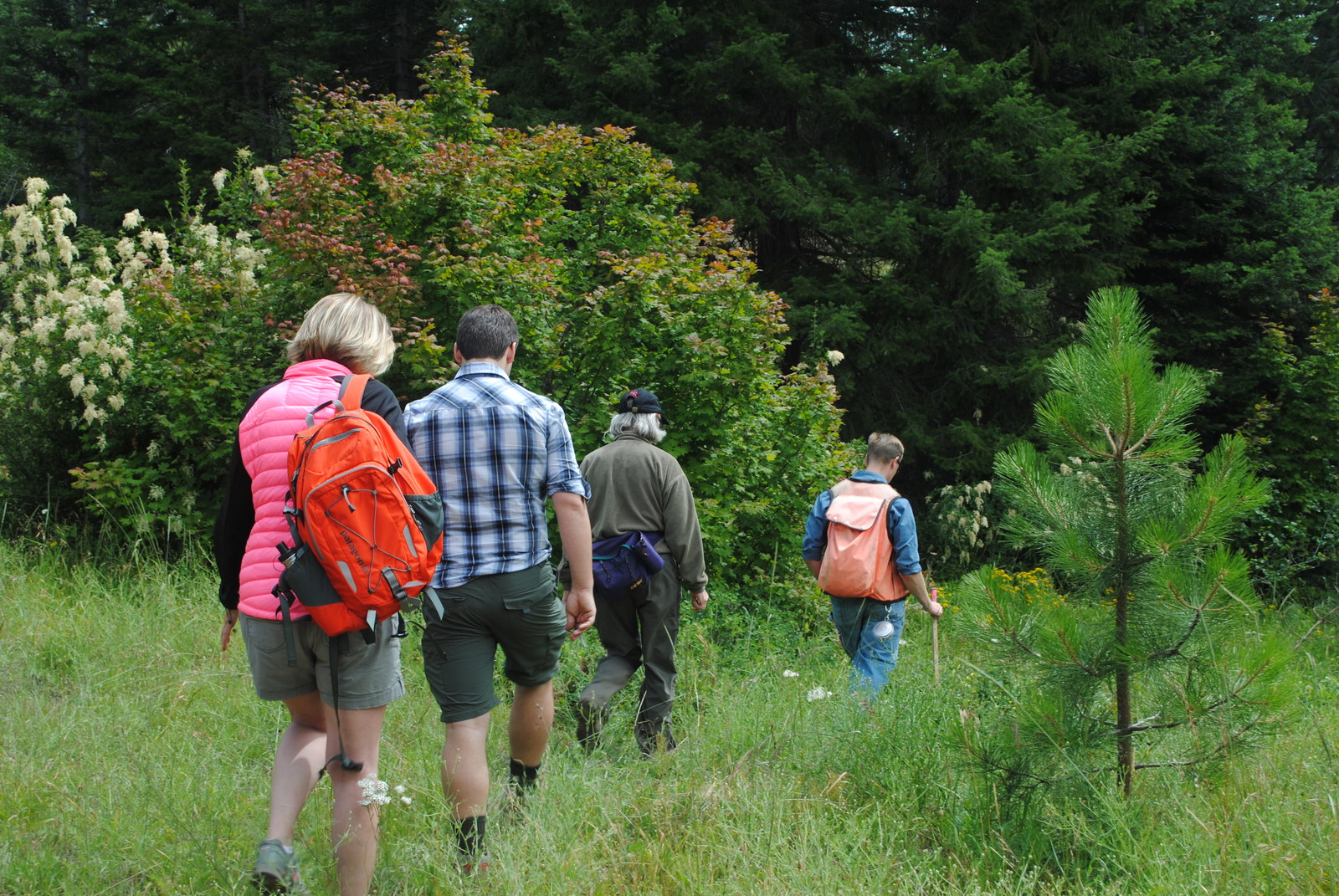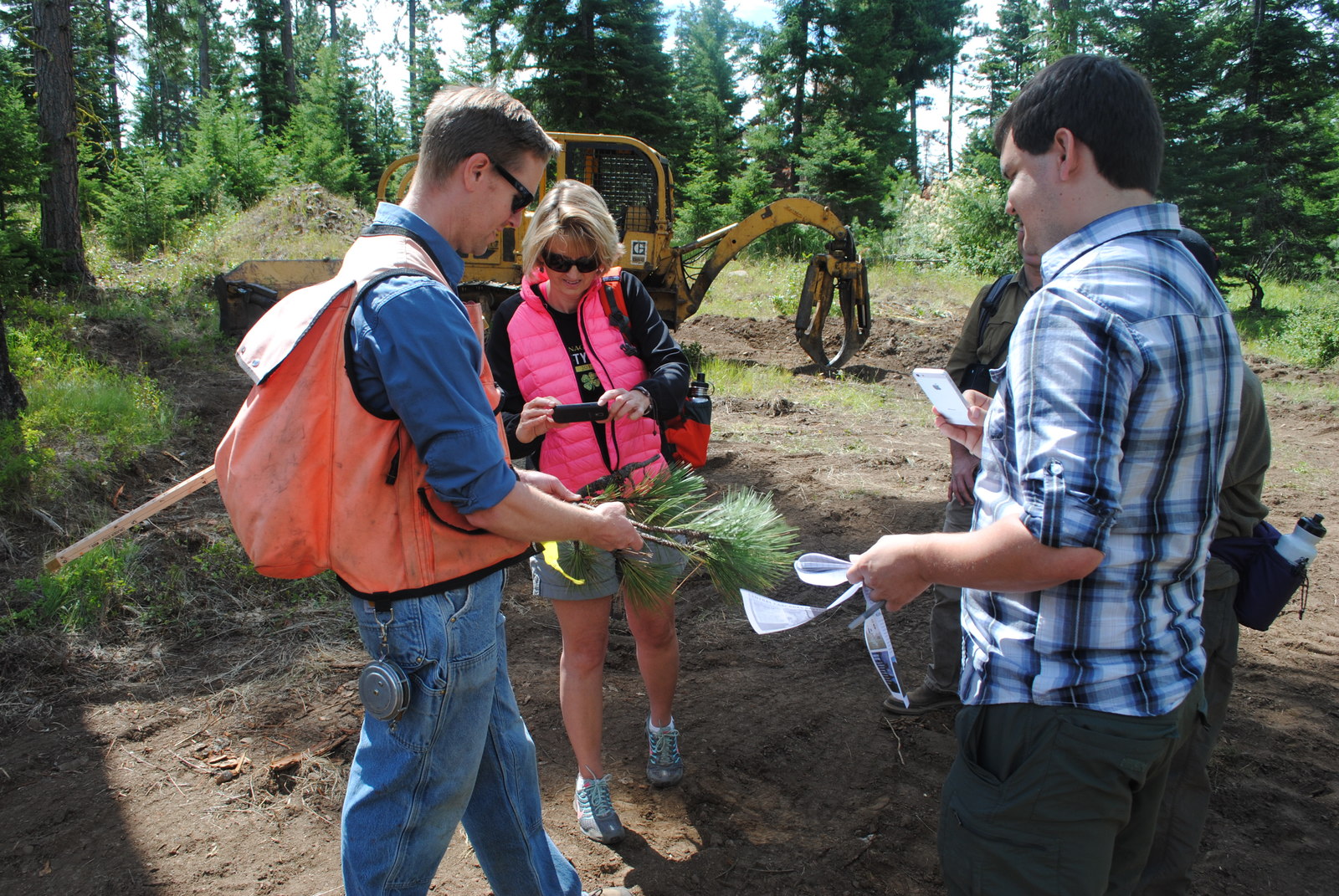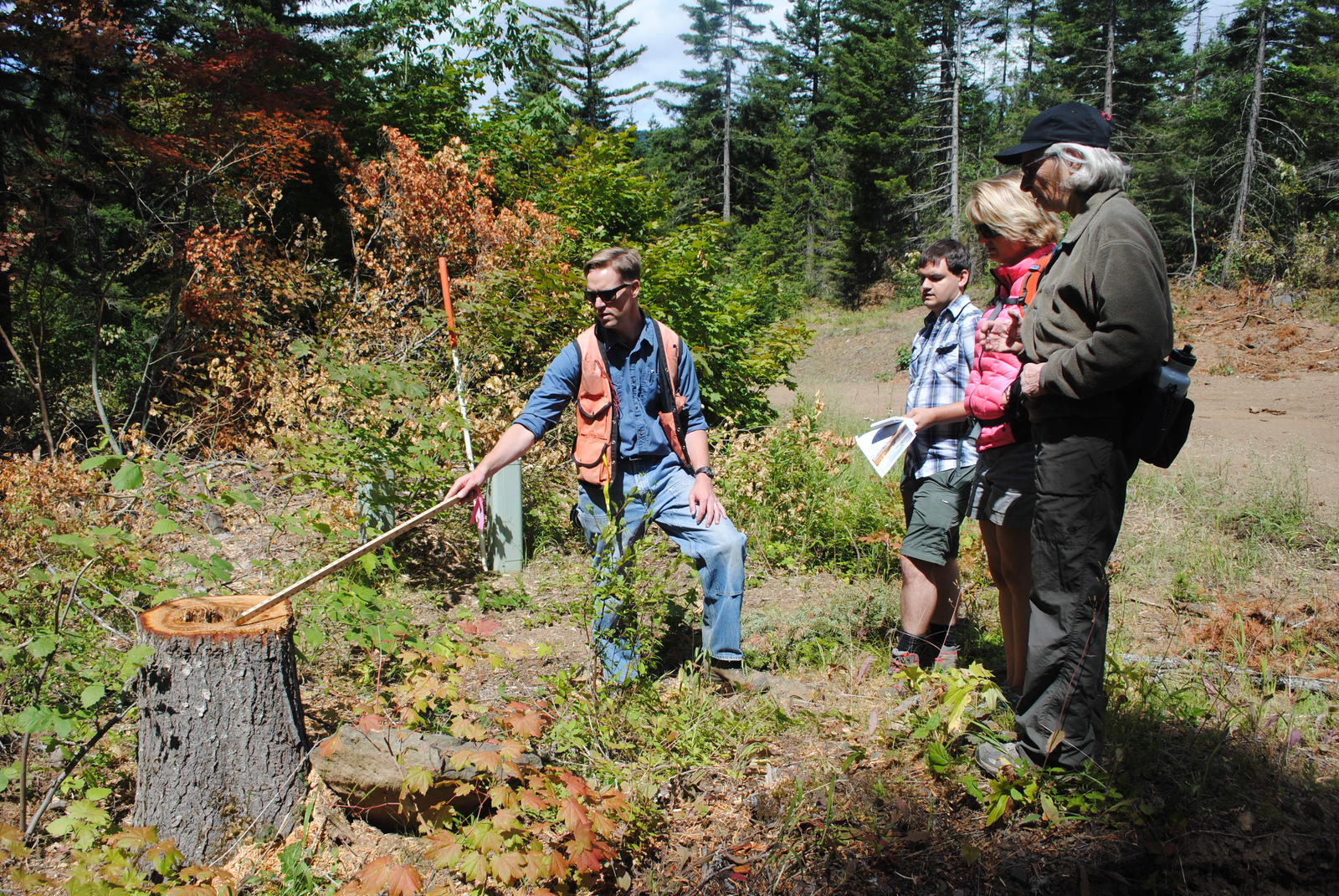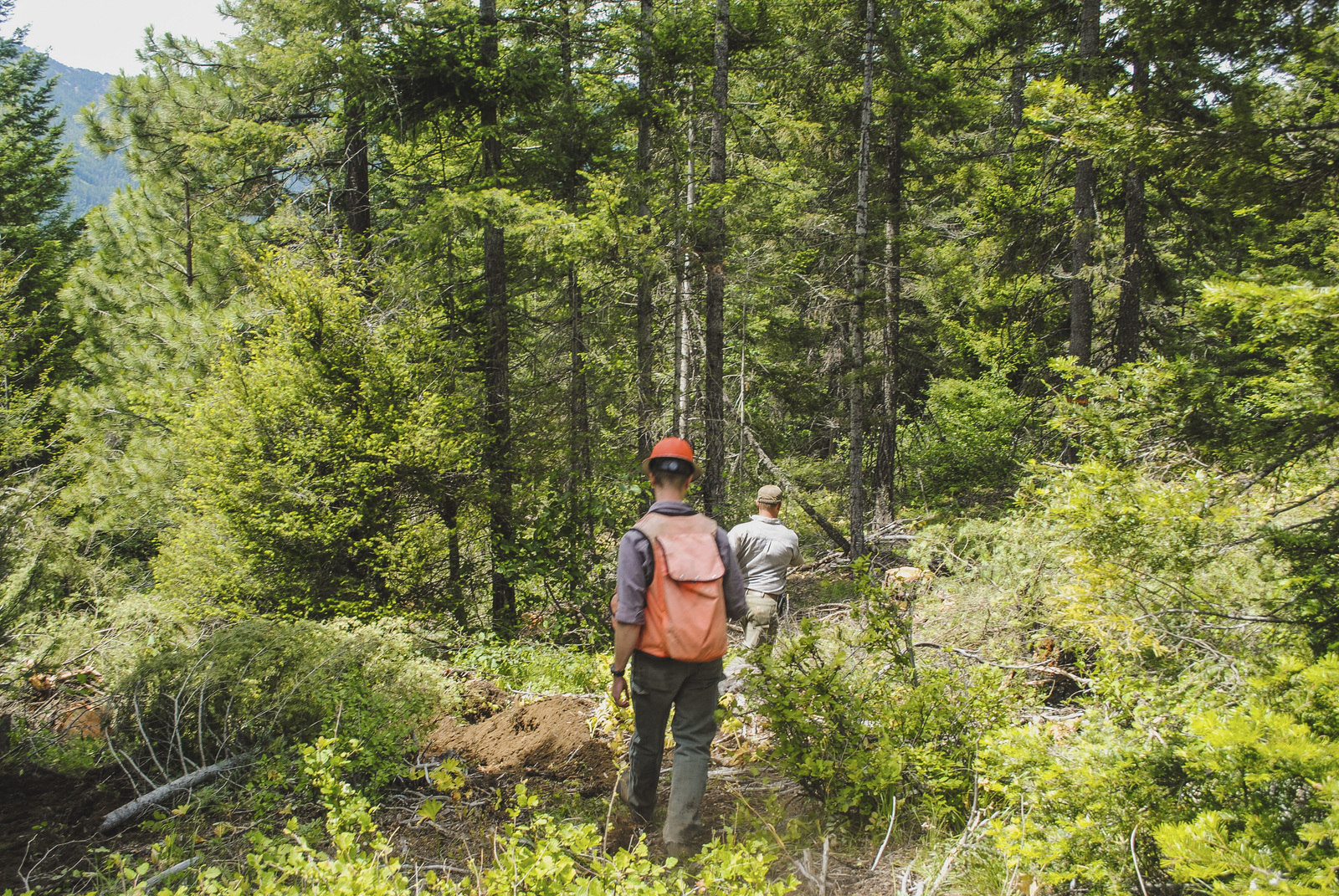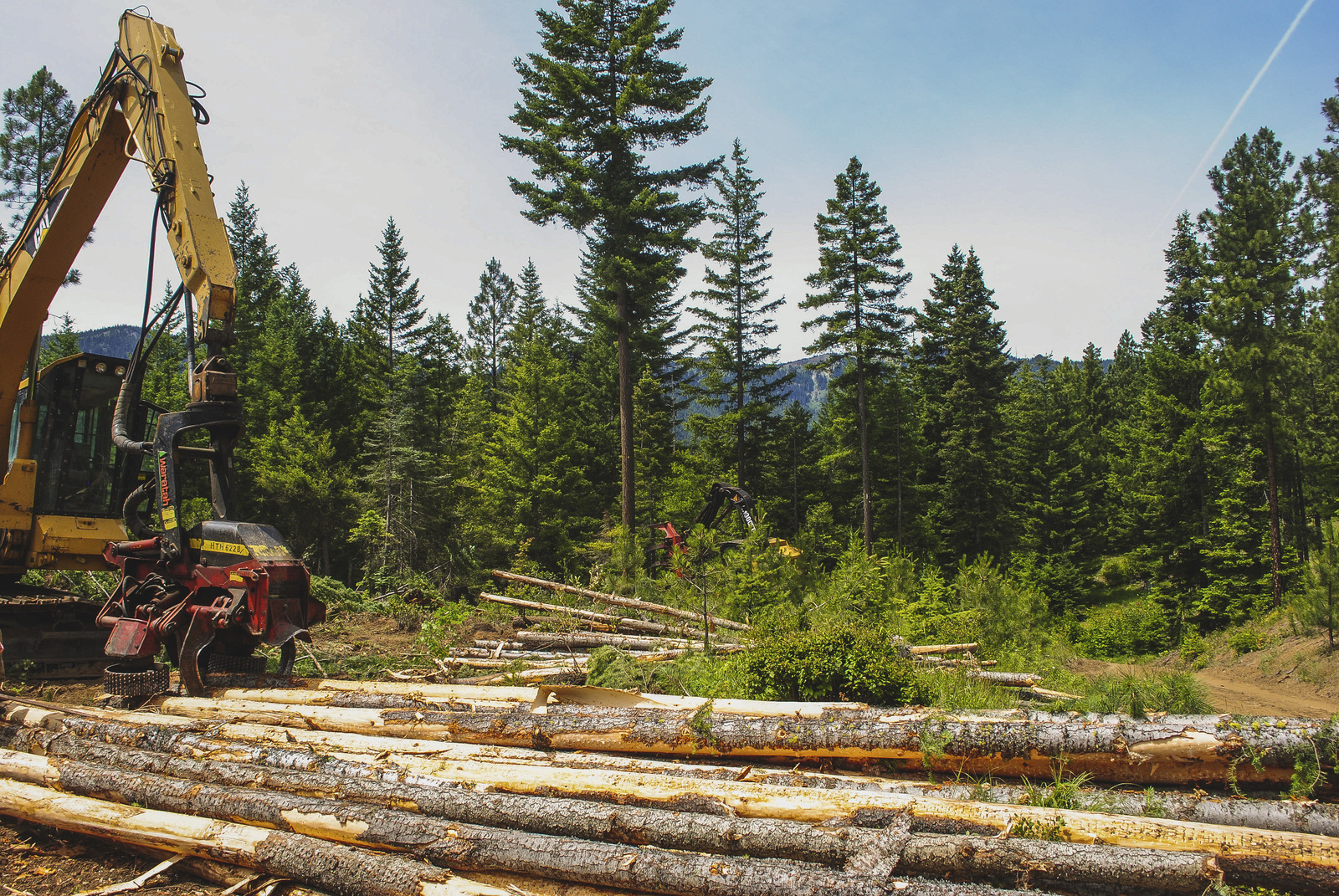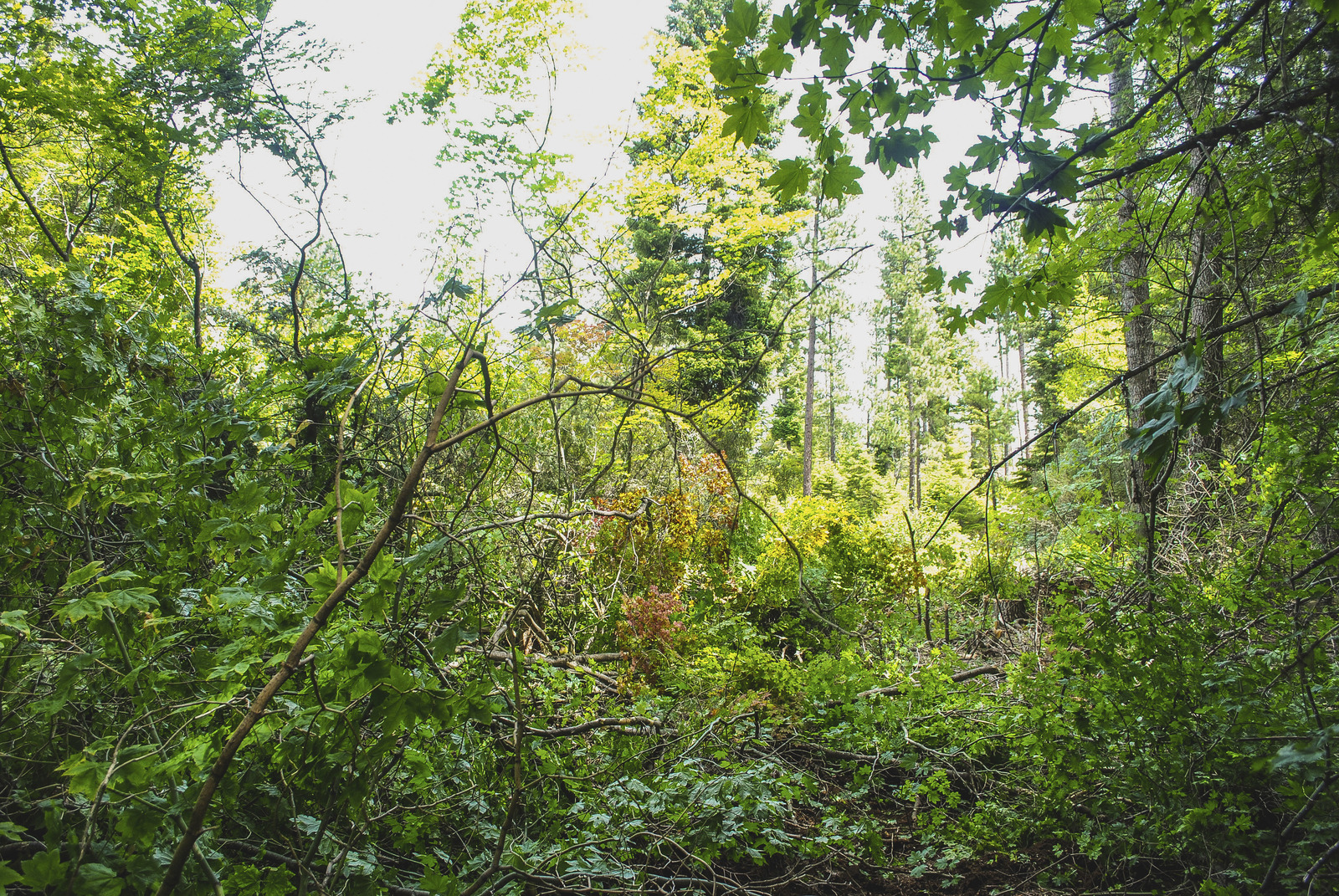Written & Photographed by Zoe van Duivenbode, Marketing Intern
I recently drove to one of our central cascade properties to meet with field forester, Brian Mize, to learn more about how we plan to manage and restore our forests. Prior to my visit, I was unfamiliar with logging as a tool for restoration and was eager to find out how removing certain stands of trees can actually benefit the forest by improving health, increasing fire resiliency and creating habitat for wildlife.
Over the last decade, fire suppression has been a high priority among land managers and owners in hopes to protect property and habitat. However, this push away from fire has slowly changed the landscape of our native forests, allowing for certain species to thrive where they typically would not and creating denser tree stands. This shift creates a problem for land managers and nearby communities because it increases the risk and severity of forest fires. Certain trees, like grand fir, are more vulnerable to forest fires and have become more common among tree stands in central cascade forests. Also, forests with high density stands forces trees to compete with each other for resources, increases the amount fuels for fires and reduces habitat suitability for wildlife.
The Nature Conservancy plans to apply restoration thinning techniques on select units of our central cascade properties to create a more historic and variable forest structure which will benefit communities, wildlife and nature. On July 9th, TNC is inviting the public to one of our central cascade properties to see our restoration first hand and learn more about the benefits of restoration thinning. Our field forester will share more about the science behind thinning, and will answer any questions about our restoration work.
Join us for Forestry Day and see our work!






